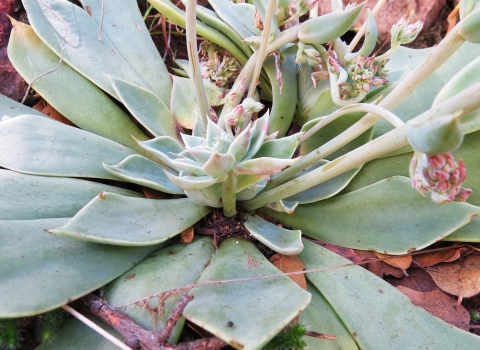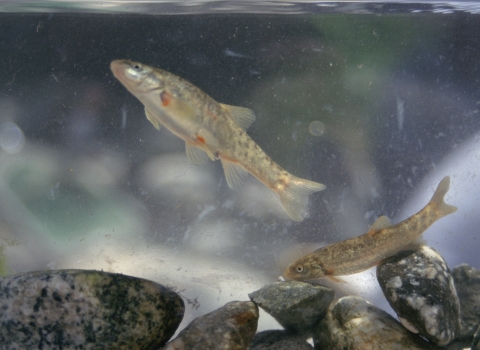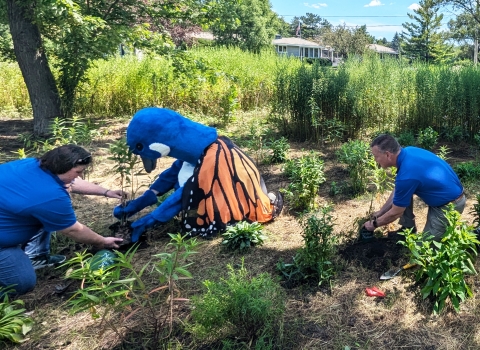RENO, Nevada – The U.S. Fish and Wildlife Service announced today that it is reopening a 60-day public comment period and seeks new and updated information on the bi-state distinct population segment of greater sage-grouse.
The Service is reopening a 60-day public comment period on the 2013 proposed rule to list the bi-state distinct population segment of greater sage-grouse as threatened with a critical habitat designation. The Service is taking this action after the United States District Court of Northern California’s May 16, 2022, ruling reinstated the Service’s October 28, 2013, proposed rules to list the bi-state DPS of greater sage-grouse as threatened with a 4(d) rule, and designate critical habitat. The Service will use existing and new information to conduct a species assessment, which will inform a final listing determination for bi-state sage-grouse and anticipates making a final listing determination by May 2024.
“Through the new evaluation process, we will review the current status of bi-state sage-grouse, the impacts caused by the threats it faces, and the potential benefits accrued by ongoing and planned conservation,” said species expert Steve Abele, a fish and wildlife biologist with the Service in Reno. “We encourage the public and interested parties to submit new, substantive information to help in our review. Information submitted during previous proposed rule public comment periods does not need to be resubmitted; it will be fully considered during this current review.”
Six populations spread across 4.5 million acres of high desert sagebrush sagebrush
The western United States’ sagebrush country encompasses over 175 million acres of public and private lands. The sagebrush landscape provides many benefits to our rural economies and communities, and it serves as crucial habitat for a diversity of wildlife, including the iconic greater sage-grouse and over 350 other species.
Learn more about sagebrush make up the bi-state distinct population segment. The species is found along the California-Nevada border near Mono Lake. Greater sage-grouse are known for the males elaborate springtime mating displays on traditional dancing grounds, known as leks. The birds use a variety of sagebrush habitats on private, state and federal lands.
According to Abele, conservation and research for the species continues to expand, “For the last 20 years the local conservation community has worked hard and been very effective at getting conservation efforts on the ground for the benefit of bi-state sage-grouse. And it’s still got legs; people are still invested in conserving the bird and its habitat, and ongoing commitments have not slowed.”
To date, federal, state, local and Tribal partners in the Bi-state Local Area Working Group have conserved, restored or enhanced more than 140,000 acres of sagebrush in the bi-state area since implementation of the Bi-state Sage-grouse Conservation Action Plan.
In 2023 the Service’s Reno field office helped secure $482,000 in Bipartisan Infrastructure Law Bipartisan Infrastructure Law
The Bipartisan Infrastructure Law (BIL) is a once-in-a-generation investment in the nation’s infrastructure and economic competitiveness. We were directly appropriated $455 million over five years in BIL funds for programs related to the President’s America the Beautiful initiative.
Learn more about Bipartisan Infrastructure Law funding for collaborative projects to improve and restore sagebrush habitat in the bi-state area. This investment is part of the larger $3 million in funding made available by the Law for projects to restore and conserve the sagebrush ecosystem in Nevada and California in 2022 and 2023.
“We will continue to work with our partners to leverage our combined resources to conserve and protect the sagebrush ecosystem,” said Justin Barrett, deputy field supervisor for the Service in Reno. “This uniquely beautiful landscape supports our rural communities, recreation opportunities and a diversity of wildlife.”
A 60-day comment period opens April 27, 2023, and closes June 26, 2023. Information on how to submit comments can be found at www.federalregister.gov by searching under docket number FWS-R8-ES-2023-0052.
The U.S. Fish and Wildlife Service works with others to conserve, protect, and enhance fish, wildlife, plants and their habitats for the continuing benefit of the American people. For more information about our work and the people who make it happen, visit https://www.fws.gov/office/reno-fish-and-wildlife or connect with us via Facebook, Twitter, YouTube and Flickr.



